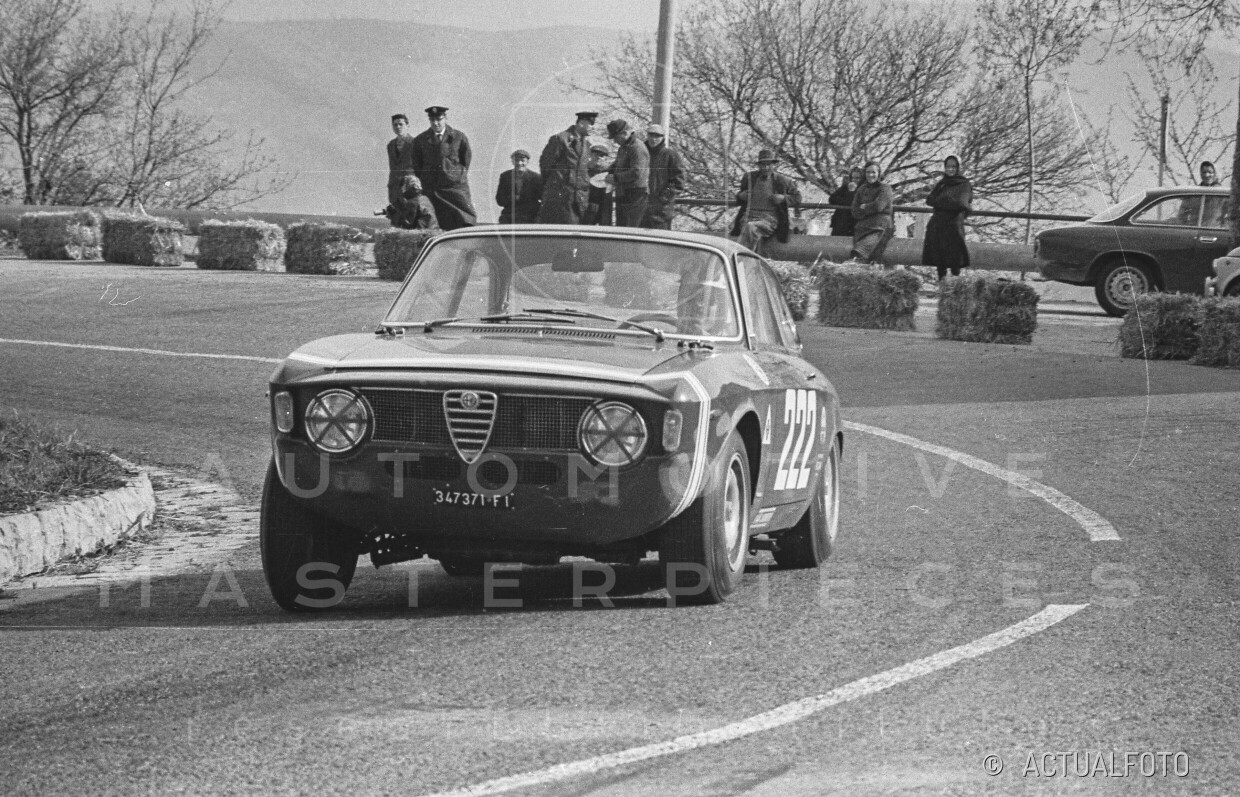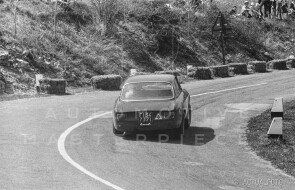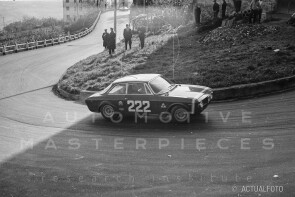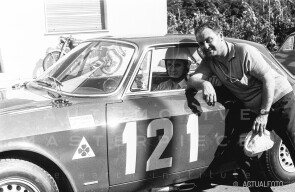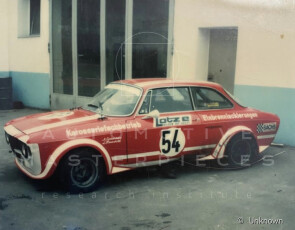
1965 Alfa Romeo Giulia Sprint GTA
ON/OFF
Why am I an Automotive Masterpiece?
The Alfa Romeo Giulia GT is a coupé derived from the Giulia built by Alfa Romeo between 1963 and 1975. The Giulia GT would have replaced the Giulia Sprint 1600, a Giulietta Sprint with 1.6 engine of the Giulia Ti, of which it maintains the general bodywork setting and also the classic front engine and gearbox placement with rear wheel drive. The bodywork, the work of a very young Giorgetto sGiugiaro at the time employed by Bertone, was mounted on the floor of the Giulia Ti sedan with a shortened wheelbase from 2510 to 2350 mm and was a sleek 2 + 2 sports coupe. The curious front "scalino" (i.e. step) that characterized all the versions produced up to 1968 and part of those produced up to 1971 was due to a rethinking between the approval of the design and the production of the car. Originally it had to be an air intake, then abolished to contain costs, which, leaving room for the "step", defined an important (and recognizable) stylistic figure. Thanks to its lines and excellent road qualities, this car became one of the most sought-after cars of the period. Several versions of Giulia GT were produced in the various series that can be classified into: Sprint GT, GT Junior, GTC (convertible), GTA (alleggerita/lightened), and GT Veloce. The Sprint GT Coupé lived up to its name, as it had a five-speed manual gearbox, a high-revving inline four-cylinder engine, and four-wheel disc brakes. So sophisticated was the Sprint GT that even at the end of the model’s life more than a decade later, it was still heralded by journalists all over the world.
The two-door coupé was as natural on the racetrack as it was on a winding Italian mountain hairpin, and it instantly seemed like the perfect starting point for Autodelta motorsports division, which had been founded in 1961 as an independent company by Carlo Chiti and Ludovico Chizzola, and subsequently absorbed by Alfa Romeo. Introduced in 1965 at the Amsterdam Motor Show, the GTA was the official competition version of the Giulia Sprint GT and was produced in both road and race variants. The Giulia Gran Turismo Alleggerita, to give it its full title, was the work of the usual team of designers headed by Orazio Satta Puliga and Giuseppe Busso, and was specifically created for competition as the replacement in the Turismo category for the Giulia T.I. Super. Visually almost indistinguishable from the road-going Sprint GT, the GTA differed by virtue of its Peraluman outer body panels instead of steel (very light alloy of aluminium, zinc and titanium), magnesium alloy wheels, clear plastic side windows, an aluminium rear upper control arm, different door handles and quarter window mechanisms, and lightweight interior trim. The engine had a new double ignition cylinder head (called twin plug, later in the eighties the system was called twin spark) cylinder head with a Marelli distributor from a Ferrari Dino, 45 mm carburetors instead of 40 mm and magnesium camshaft cover, sump, timing cover and bell housing. The transmission gear ratios were closer than standard, and the gears were machined for lightness and quicker shifting. Dry weight of the 1600 was approximately 740 kg. In stradale form this car boasted approximately 115 hp (up from 106 hp). In full race form this engine could produce up to 170 hp. The 1600 GTA did not have a brake booster and had a thicker radiator than the standard vehicle. The GTA’s official racing debut occurred on 20 March 1966, when Andrea de Adamich and Teodoro Zeccoli drove it to victory in the Jolly Club Four Hour Race. GTAs later went on to help Alfa Romeo and Autodelta win the European Touring Car Championship for three consecutive years, beginning in 1966. GTAs have been revered for decades. For homologation purposes, approximately 500 road going stradale and race-setup corsa GTAs were built between 1965 and 1969, both in left- and right-hand-drive configurations, and many of which naturally wound up being privately used in competition.
The Giulia GTA with chassis no. AR*613667* left the factory and was registered (Bologna) in October 1965. It was originally purchased new by Paolo Berselli, who sold it after a year to Roberto Baschera. The racing debut took place in April 1967 at Pieve Santo Stefano - Passo dello Spino, under the auspices of the Scuderia Automobilistica Clemente Biondetti A.S.D. The car raced with the number #222 and had a sticker on the rear fender with the inscription "Preparazioni Bogani Firenze." According to the owner Baschera's recollections, it was driven by Ettore Bogani and finished 4th in class. However, it seems possible (source Actualfoto) that Aldo Horvat, racing under the pseudonym "Hoga," was behind the wheel, achieving an impressive 3rd overall / 1st in class. In May, the car participated (again with number #222) in the Coppa Città di Volterra; testimonies are even more confusing: apparently, the car with Horvat qualified 1st in class. Still, from Roberto Baschera's memory, he himself competed in his only driving opportunity. Other sources then identify a white GTA driven by Horvat (car prepared by Scar Autostrada) with the race number 222, while Baschera would appear with the number 230. Mauro Cintolesi drives the car at the Fornaci di Barga hill climb. There is a sticker "Officina Marcello" on the car's front fender, belonging to the renowned preparer Marcello Carlini. AR*613667*’s involvement in races continues under different owners, and the car is sold in Germany in 1977 where, still competitive twelve years after its debut, it begins a second part of its racing career, consistently achieving excellent class placements with driver Arthur Eickenberg. In 1977, the car races 11 times at the Nürburgring (and once at Zolder), in 1978 it returns 4 times to the Nürburgring. After surpassing the 21st century mark, the car ends up at the German specialist for Alfa Romeo sports cars, “Formula GT”, which completely restores it. Later, it is acquired by a private collection.
